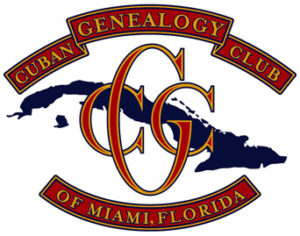Ecclesiastical Records
La Habana Province – Habana Vieja
About Havana Province
The Province of La Habana was created in 1878 and is one of the 6 historical provinces in which the island was divided, still under Spanish colonial rule.
La Habana Province, formerly known as Ciudad de La Habana Province, is a province of Cuba that includes the territory of the city of Havana, the Republic’s capital. Between 1878 and 2010, the name referred to another province that covered a much larger area, and was subdivided into the present-day provinces of Artemisa (which also took over three municipalities from Pinar del Río) and Mayabeque.
Before 1961, Havana was the official name only of the central municipality of an area that included at least 6 municipalities: Havana, Marianao, Regla, Guanabacoa, Santiago de las Vegas and Santa María del Rosario-Cotorro. Currently, the territory that occupies the old municipality of Havana (former Villa of San Cristóbal de La Habana) is divided into 6 municipalities (Plaza de la Revolución, La Habana Vieja, Centro Habana, Diez de Octubre, Cerro, Arroyo Naranjo), and Boyeros (Altahabana). The city, as it is conceived at the present time, includes all the provincial territory and also includes the territories of 9 municipalities that were not part of old Havana municipality, which are: Playa, Marianao, La Lisa, Guanabacoa, Regla, Habana del Este, San Miguel del Padrón, Cotorro and Boyeros.
About Havana Churches
As of March 2023, we have 7 churches represented in this section. Please also see our Havana Churches Page.
PLEASE NOTE: The files represented are NOT the complete holdings of these churches, only what we have been able to acquire.
We are very grateful to our members for their generosity and willingness to share their valuable information with us!
IMPORTANT: Please contact, and credit, the CGC prior to using any part of this page by sending an email to secretary@cubangenclub.org
Cuban Church Records and Archives
A presentation on Cuban Church Records and Archives given by Fr. Juan Luis Sanchez on July 14, 2008 is offered here for dissemination with his permission.
A recording of this presentation is available for members on the Members Only-Videos Page
Another Resource
Slave Societies Digital Archive at Vanderbilt University
The Slave Societies Digital Archive (SSDA), directed by Jane Landers at Vanderbilt University, was launched in 2003. It is dedicated to identifying, cataloging, and digitally preserving endangered archival materials documenting the history of Africans and their descendants in the Atlantic World.
Slave Societies teams digitally captured ecclesiastical records of more than 750,000 individuals during almost three years of intensive work in Cuba and Brazil. Beginning in 2007, another grant allowed the group to preserve additional records at new project locations in Brazil, Colombia, and Cuba.
La Catedral de San Cristobal in Havana, Cuba
The Cathedral is one of eleven Catholic cathedrals on the island. It is located in the Plaza de la Catedral on Calle Empedrado, between San Ignacio and Mercaderes in Habana Vieja. The church serves as the seat of the Roman Catholic Archdiocese of San Cristobal de la Habana.
“Libro de Barajas de la Catedral de La Habana” are the first parish registers for the cathedral. The “Matrimonios” register contain marriages from July 16, 1588 to January 30, 1622. The records contain date of marriage, names of the bride and groom, names of godparents, the name of the priest who performed the marriage, professions, ethnic descriptors, and geographic origins.
“Bautismos” contain baptisms registered from January 20, 1590 to January 16, 1600. The records contain date of baptism, names of the baptized individual, names of the baptized individual’s parents, names of the godparents, the name of the priest who performed the marriage, professions, ethnic descriptors, and geographic origins.
The following documents were donated by Mariela Fernandez from her collection.
The following documents were donated by Sonia Jones (born Hernandez Gonzalez) from her collection.
Extractos de registros de la Catedral de La Habana by Francisco Xavier de Santa Cruz y Mallen
Extracts of parish registers from the cathedral of Havana. Contains a partial listing of those registers. (Filmed by the Utah Genealogical Society)
Church Documents on SSDA
Libro de Barajas: Bautismos, 1590-1600
Libro 1 – Bautismos 1590-1600 – Copiado del Baraja
Transcription – Libro de Barajas: Bautismos, 1590-1600 (159-page PDF)
Libro 47 de Bautismos de Pardos y Morenos, 1877-1886
Libro de Barajas: Matrimonios, 1584-1622
Libro 0 – Matrimonios 1584-1622 – Copiado del Baraja
Transcription – Libro de Barajas: Matrimonios, 1584-1622 (258-page PDF)
Primeros Matrimonios – Index – See Fr. Juan Luis Sanchez Collection – 10 May 2012
Bautismos – Libro del Monte, 1666-1698
Transcription - PREMIUM CONTENT
Bautismos – Libro del Monte, 1666-1698 (Transcribed by Lourdes del Pino)
Espiritu Santo Church in Havana, Cuba
Originally erected as a chapel by freed slaves in 1638. It was rebuilt in 1863 and inaugurated on January 31, 1867. It is located on the corner of Cuba and Acosta Streets.
Sacramental books are divided by race between Spaniards and everyone else. The second designation pertains to Pardos y Morenos. Sacramental Books contain information on Baptisms, Marriages, Deaths and Burials, Confirmations, and other information on individuals who were parishioners or otherwise associated with the Catholic Church of Espiritu Santo.
Sacramental Books – General Information:
- Baptism Books begin in 1674
- Marriage Books begin in 1674
- Burial Books begin in 1694
*The burial files noted below are from a handwritten transcription of the entries found in the various books at the church. This work was done by Sherry Johnson, Associate Professor in the History Department at Florida International University, on a visit to Cuba. We are especially grateful to Sherry Johnson for her generosity in sharing her years of experience and fruits of her research with all of us!
PLEASE NOTE: The entries extracted in the files are NOT all the entries found in the selected Burials Books. These were chosen because of the researcher’s particular focus during her trip to Cuba.
Documents from Members
The following document was donated by Sonia Jones (born Hernandez Gonzalez) from her collection.
The following marriage spreadsheets were donated by Jose Ignacio Vildosola from his collection.
Church Documents on SSDA
Libro 7 de Baptismos de Yndios, Negros, y Mulatos, 1737-1748
Libro 12 de Bautismos de Yndios, Pardos, y Morenos, 1773-1777
Libro 16 de Bautismos de Pardos y Morenos, 1786-1789
Libro 21 de Bautismos de Pardos y Morenos, 1797-1799
Libro 22 de Bautismos de Pardos y Morenos, 1799-1800
Libro 29 de Bautismos de Pardos y Morenos, 1807-1809
Libro 30 de Bautismos de Pardos y Morenos, 1809-1810
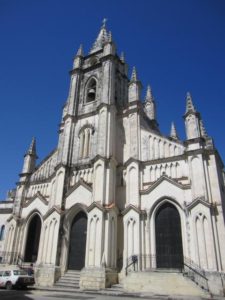
Santo Angel Custodio Church in Havana , Cuba
Originally erected in 1630 by Bishop Diego Avelino de Compostela. The tower and whole of the front and back of the nave were destroyed by the hurricane of 1846. These were rebuilt and notably altered by Bishop Jacinto Maria Martinez to the gothic style that is seen today. The church is located on the corner of Compostela and Cuarteles Streets on one of the few hills of the city, at first called Peña Pobre and then Loma del Angel.
The history of this church records the christening of two of the greatest Cuban personalities: Félix Varela and José Martí. At the church entrance we found a bust of the Cuban writer Cirilo Villaverde created by Hidalgo. His novel “Cecilia Valdés” o “La Loma del Ángel” has in this temple, especially in its porch, one of the varied backgrounds where the story unfolds.
Church Documents on SSDA
Libro 1 de Bautismos de Pardos y Morenos, 1703-1713
Libro de Bautismos Pardos y Morenos 1800-03, 13N
Libro de Bautismos Pardos y Morenos 1803-05, 14N
Libro de Bautismos Pardos y Morenos 1805-09, 15N
Libro de Bautismos Pardos y Morenos 1809-12, 16N
Libro de Bautismos Pardos y Morenos 1815-19, 17N
Libro de Bautismos Pardos y Morenos 1819-25, 18N
Libro de Bautismos Pardos y Morenos 1825-30, 19N
Libro de Bautismos Pardos y Morenos 1830-33, 20N
Libro de Bautismos Pardos y Morenos 1834-36, 21N
Libro de Bautismos Pardos y Morenos 1836-38, 22N
Libro de Bautismos Pardos y Morenos 1838-40, 23N
Libro de Bautismos Pardos y Morenos 1840-43, 24N
Libro de Bautismos Pardos y Morenos 1843-48, 25N
Libro de Bautismos Pardos y Morenos 1848-53, 26N
Libro de Bautismos Pardos y Morenos 1853-61, 27N
Libro de Bautismos Pardos y Morenos 1861-72, 28N
Libro 1 de Matrimonios de Indios, Pardos, y Morenos, 1693-1715
Libro 2 de Matrimonios de Negros, Indios, y Pardos, 1770-1792
Libro 4 de Matrimonios de Pardos y Morenos, 1812-1839
Libro 5 de Matrimonios de Pardos y Morenos, 1839-1850
Libro 1 de Defunciones de Españoles, 1693-1712
Libro de Confirmaciones Pardos y Morenos 1803-05
Libro de Confirmaciones Pardos y Morenos 1824-86
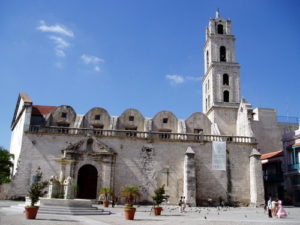
San Francisco Monastery in Havana, Cuba
The St. Francis Monastery was erected around 1587. A community of Franciscan friars who had lived in the city of Havana for about ten years founded it. Its naves have witnessed the history of the city of Havana. In its precinct, sleep the 17th and 18th century aristocracy of Havana, from captain generals to the titled of Castilla.
For a long time, the monastery was an institution of learning and achieved noted academic success. Among the learned of that precinct is Jose de la Luz y Caballero who years later returned there to teach philosophy.
Throughout its extensive existence it has been utilized for many diverse purposes, and today, it is the seat of a chamber music organization.
St. Francis founded the Third Order of Saint Francis in 1221 as a true secular religious order. Its principal objective was its pastoral activity on the five continents and moreover assisting children, the sick, the elderly, the marginalized, and emigrants, as well as academic and professional instruction and all type of assistance to the less fortunate.
Source: This listing of individuals is not complete. There were many more individuals buried in the monastery. It was originally published by Manuel Perez Beato in the magazine named “El Curioso Americano.” Later the list was reproduced by Fernando Suarez de Tangil y de Angulo, Conde de Vallellano in his book “Nobiliario Cubano – Las grandes familias isleñas.”
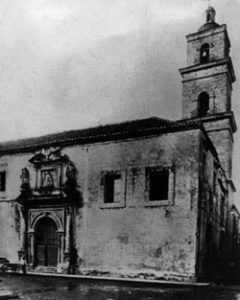
Santo Domingo Monastery in Havana, Cuba
The Church of Nuestra Señora de Santa María de la Consolación, later called San Juan de Letrán or Santo Domingo, was founded by Father Andrés Dénis in the second half of the sixteenth century. The exact date of its creation was not documented, but it is believed that it already existed by 1564. Upon his death, Father Dénis gave the church, his house and the adjacent land to the order of the Dominican Friars so that they could build a monastery. (The donated area comprises the modern-day streets of O´Reilly, Mercaderes, Obispo and San Ignacio in Havana.) In 1587, orders were given to the Governor of Cuba to provide materials and labor for the remodeling of the original church. In 1648, an effort is put forth to use wood, clay and rock materials to conclude the building of the sacristy, dormitories and main chapel. In 1721, the Dominican friars received authorization to create the “Real y Pontificia Universidad de San Jerónimo de La Habana” on the premises.
Burial records exist from January of 1613 through 1805. Our file lists some of the persons who were buried in this church.
Santo Cristo del Buen Viaje Church in Havana, Cuba
The church was founded in 1640 but the current building dates from 1755. The parish books date back to the 17th Century. It is currently located at Villegas y Amargura in Habana Vieja, Cuba.
The following document was donated by Thomas Santa Cruz from his personal research.
Church Documents on SSDA
Libro 1 de Bautismos de Pardos y Morenos (1702-1721)
Libro 2 de Bautismos de Pardos y Morenos (1721-1730)
Libro 3 de Bautismos de Pardos y Morenos (1730-1740)
Libro 4 de Bautismos de Pardos y Morenos (1741-1749)
Libro 5 de Bautismos de Pardos y Morenos (1750-1755)
Libro 6 de Bautismos de Pardos y Morenos (1755-1760)
Libro 7 de Bautismos de Pardos y Morenos (1760-1765)
Libro 8 de Bautismos de Pardos y Morenos (1765-1769)
Libro 23 Bautismos de Yndios, Pardos y Morenos (1801-1803)
Libro 24 de Bautismos de Pardos y Morenos (1803-1807)
Bautismos de Pardos y Morenos – Inventory
Libro 1o de Baraja – Matrimonios y Entierros de todas clases (1692-1711)
Libro 6 de Matrimonios de Pardos y Morenos (1785-1798)
Libro 7 de Matrimonios de Pardos y Morenos (1798-1820)
Libro 8 de Matrimonios de Pardos y Morenos (1820-1854)
Matrimonios Pardos y Morenos (1765-1769)
Matrimonios Pardos y Morenos (1803-1807)
Matrimonios Pardos y Morenos (1823-1829)
Matrimonios Pardos y Morenos (1844-1879)
Expedientes de Matrimonios de Pardos y Morenos (1803-1811)
Expedientes de Matrimonios de Pardos y Morenos (1812-1816)
Expedientes de Matrimonios de Pardos y Morenos (1816-1822)
Expedientes de Matrimonios de Pardos y Morenos (1823-1829)
Libro 3 de Entierros de Indios, Pardos y Morenos (1718-1738)
Libro 4 de Entierros de Pardos y Morenos (1738-1761)
Libro 5 de Entierros de Pardos y Morenos (1761-1777)
Libro 6 de Entierros de Pardos y Morenos (1777-1784)
Libro 7 de Entierros de Pardos y Morenos (1784-1792)
Libro 8 de Entierros de Pardos y Morenos (1792-1803)
Defunciones de Asiáticos no Bautizados (1867-1868)
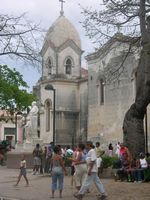
Jesus, Maria & Jose Church in Havana, Cuba
The church is located Calle Vives # 103 between Águila and Revillagigedo, Habana Vieja, Cuba.
Church Documents on SSDA
Libro 1 de Bautismos de Pardos y Morenos (1773-1798)
Libro 3 de Bautismos de Pardos y Morenos (1808-1818)
Libro 4 de Bautismos de Pardos y Morenos (1818-1820)
Libro 5 de Bautismos de Pardos y Morenos (1821-1822)
Libro 6 de Bautismos de Pardos y Morenos (1822-1828)
Libro 7 de Bautismos de Pardos y Morenos (1828-1836)
Libro 8 de Bautismos de Pardos y Morenos (1836-1841)
Libro 9 de Bautismos de Pardos y Morenos (1841-1844)
Libro 10 de Bautismos de Pardos y Morenos (1844-1846)
Libro 13 de Bautismos de Pardos y Morenos (1861-1867)
Libro 14 de Bautismos de Pardos y Morenos (1867-1876)
Libro 15 de Bautismos de Pardos y Morenos (1876-1885)
Libro 16 de Bautismos de Pardos y Morenos (1885-1887)
Libro 1 de Índice de Bautismos de Pardos y Morenos
Libro 2 de Índice de Bautismos de Pardos y Morenos
Libro 12 de Índice de Bautismos de Pardos y Morenos (1853-1861)
Libro 1 de Matrimonios de Pardos y Morenos (1773-1821)
Libro 2 de Matrimonios de Pardos y Morenos (1822-1861)
Libro 3 de Matrimonios de Pardos y Morenos (1861-1913)
Índice de Libros 1 a 3 de Matrimonios de Pardos y Morenos (1773-1913)
Confirmaciones de Pardos y Morenos (1847)
Libro 2 de Confirmaciones de Pardos y Morenos (1866)
Baptisms - 1773
Filmed as part of a record survey for the Latin American Microform Project (LAMP) titled “Catholic Parish Registers in Havana, Cuba. It Includes reproductions of baptism, marriage, and other records from various Catholic churches in Cuba.
The file was donated by Mariela Fernandez, CGC President, from her personal research collection.
